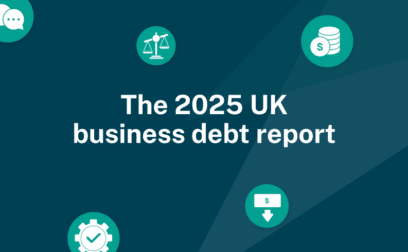TABLE OF CONTENTS









Page written by Chris Godfrey. Last reviewed on December 4, 2024. Next review due April 6, 2026.

Buying big-ticket manufacturing equipment such as conveyors, assemblers, ovens, presses, and packing systems can put a major dent in working capital. Instead, most UK manufacturers opt for equipment financing, using business loans and equipment leases to get the machinery they need without struggling to pay with cash.
Manufacturing financing is a type of lending that can be used to buy equipment and machinery for manufacturing businesses, or to borrow against the value of equipment that manufacturers already own. In the first instance, manufacturing financing can help you to purchase or lease new or used equipment. In the second instance, manufacturing financing can release cash from a previously illiquid asset – machinery and equipment that your business owns – to provide funds that you can use elsewhere.
Manufacturing finance comes in three basic varieties:
Manufacturing equipment financing allows you to pay for the machinery you need over time instead of all at once. You use the equipment as you pay for the equipment whilst reducing pressure on your cash flow. Equipment financing can also give you added financial firepower, allowing your business to obtain better, more expensive machinery and technology than you may be able to afford if paying with cash.
Replace old equipment
Old equipment that is no longer fit for purpose because it’s either too slow, needs constant repair, or is incompatible with other modern systems, is a major drain on your manufacturing business. In an industry where every cent counts, best efficiency is crucial. Time lost is money lost. Upgrading or replacing your current equipment can make your business more profitable and provide more opportunity to grow.
Benefits of equipment leasing
With a lease, you’re not buying the equipment, you’re taking on a long-term rental. Depending on the type of lease you choose, (finance lease or operating lease), you may have the option to buy the construction equipment at contract end for a pre-agreed sum, (which could be as low as R1 but is typically the residual value of the equipment – which means what it’s worth in used condition).
Because you’re not repaying the whole cost of the equipment, leasing usually requires lower monthly payments than a business loan. You may also pay a smaller down payment – perhaps equal to one or two month’s repayment instalments.
If you choose not to buy the equipment at the end of the lease, (or you have chosen an operating lease that forbids it), the equipment goes back to the lender. You would then need to take out a new lease and obtain new equipment. (Which could allow you to obtain more modern and up to date machinery).
Some lessors (lenders) may give you the option to extend the lease if you prefer to keep the equipment but do not wish to pay the residual.
Advantages of leasing manufacturing equipment:
Disadvantages of leasing manufacturing equipment:
Although many types of business loans are suitable for buying manufacturing equipment, they all work to the same basic format: You borrow a sum of cash and then repay it over time. Interest charges and fees are added to the principal amount you borrow, and the lender may retain a lien on the equipment during the term of the loan. At contract end you’ve paid off the loan and you own the equipment outright.
Advantages of business loans to buy manufacturing equipment:
Disadvantages of business loans to buy manufacturing equipment:
Although every lender will have their own qualifying criteria, some fundamental rules apply. In most cases, lenders will need to see:
You will also usually need to provide bank statements, tax returns and other financial documentation. However, even if your credit score is weak and/or you’ve been turned down elsewhere, it may still be possible to get the equipment financing you need. To find out if you qualify before you apply, contact Swoop to discuss your funding needs with a finance expert.
Obtaining a manufacturing equipment loan or lease is no different to obtaining most other forms of business finance – preparation is key:
No matter if you’re seeking your first equipment loan or you’re a seasoned borrower, working with business finance experts can make all the difference when applying for funding. Contact Swoop to discuss your borrowing needs, get help with your application and to compare high-quality equipment financing deals from a choice of lenders. Give your manufacturing business the equipment it deserves. Register with Swoop today.
Chris is a freelance copywriter and content creator. He has been active in the marketing, advertising, and publishing industries for more than twenty-five years. Writing for Barclays Bank, Metro Bank, Wells Fargo, ABN Amro, Quidco, Legal and General, Inshur Zego, AIG, Met Life, State Farm, Direct Line, insurers and pension funds, his words have appeared online and in print to inform, entertain and explain the complex world of consumer and business finance and insurance.
Swoop promise
At Swoop we want to make it easy for SMEs to understand the sometimes overwhelming world of business finance and insurance. Our goal is simple – to distill complex topics, unravel jargon, offer transparent and impartial information, and empower businesses to make smart financial decisions with confidence.
Find out more about Swoop’s editorial principles by reading our editorial policy.
Related pages
Get your free Manufacturing equipment financing quote today
Join the 95,000+ businesses just like yours getting the Swoop newsletter.
Free. No spam. Opt out whenever you like.



























We work with world class partners to help us support businesses with finance
Suite 42, 4th Floor, Oriel Chambers, 14 Water Street, Liverpool, L2 8TD
View in Google MapsKingfisher Way, Silverlink Business Park, Newcastle upon Tyne, NE28 9NX, UK
View in Google Maps35 Bull Street, Lewis Building, Birmingham B4 6AF, UK
View in Google MapsAberystwyth Innovation and Enterprise Campus
Gogerddan Campus
Aberystwyth University
Ceredigion
SY23 3EE
Dogpatch Labs, The CHQ Building, Custom House Quay, Dublin, Ireland
View in Google MapsSuite 801, Level 8, 84 Pitt Street, Sydney, NSW 2000, Australia
View in Google Maps43 W 23rd St, New York, NY 10010, United States
View in Google Maps21 Dreyer Street, Cape Town, South Africa, 7708
View in Google MapsClever finance tips and the latest news
Delivered to your inbox monthly
Join the 95,000+ businesses just like yours getting the Swoop newsletter. Free. No spam. Opt out whenever you like.
Thanks for requesting a call back
a member of the team will be in touch.




